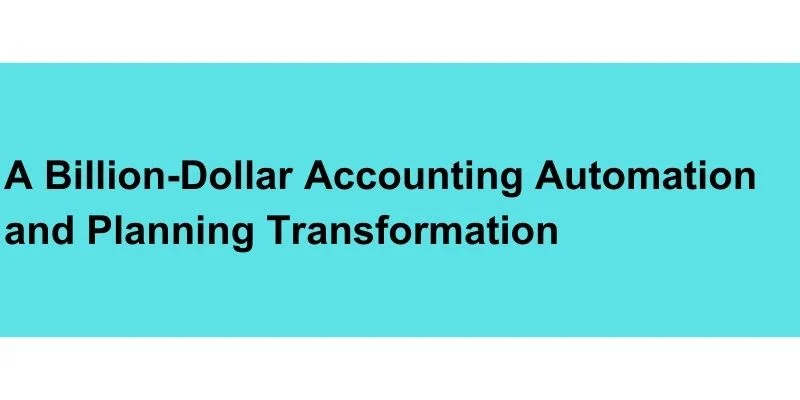Introduction
In the fast-paced world of global business, efficiency and precision in financial reporting and project planning are critical. This narrative unfolds within the context of an MNC spanning across multiple countries. This conglomerate encompasses numerous subsidiary companies, all ardently committed to achieving project-based outcomes. At the heart of this vast operation are more than numerous project managers, each diligently overseeing multiple projects simultaneously.
Current Situation
Reporting The finance department, tasked with consolidating the Profit and Loss (P&L) statements of each project managed within the organization on a monthly basis, faced a Herculean challenge. Simultaneously, they were responsible for delivering a plethora of Management Information System (MIS) reports across the entire corporate spectrum. Planning Meanwhile, project managers found themselves grappling with the lack of suitable tools to construct comprehensive project planning documents. These documents needed to encompass critical data such as project timelines, resource allocation, and expenses incurred towards project completion. Although some valiant efforts were made to create project management planning documents using spreadsheets, chaos reigned. There was a dire lack of clarity regarding which version of the plan was approved, and which represented the most up-to-date information. Moreover, the identity of the last person to make edits and the timestamp of those changes remained elusive. The management was mired in a sea of uncertainties, desperately in need of resolution for these pressing issues.
The Problems to Solve
Two distinct yet interconnected problems emerged as top priorities:
1. Reporting Automation with Role-Based Access: The first challenge was to automate reporting while ensuring role-based access. The goal was to deliver P&L reports to the relevant stakeholders without the manual intervention of the finance team. This required a solution that could tailor reports to the specific needs of both management and project managers.
2. Efficient Project Planning Tool with Version Control and Audit Trail: The second challenge centred around project planning. The objective was to develop a planning tool that not only facilitated the creation of planning documents but also meticulously logged all entries. Additionally, this tool needed to incorporate version control and an audit trail that captured every entry, update, and version history.
The BiCXO Solution
BiCXO, with its team of highly skilled technical and functional consultants, embarked on a journey to address these pressing issues. They devised a meticulously structured methodology, divided into two distinct phases, aimed at delivering solutions with lightning-fast efficiency.
Phase 1 – Finance Automation In this initial phase, BiCXO’s team focused on comprehending the finance team’s existing processes and requirements. They delved deep into the intricacies of how financial reporting was conducted at the organizational level, as well as the methods of distribution. Through meticulous analysis, they identified the pain points and bottlenecks in the existing reporting processes.
The outcome of Phase 1 was the successful implementation of BiCXO’s robust financial automation software. This innovative solution seamlessly scanned all project submissions and, thanks to the role-based access protocols,
1. Tailored Reports: generated P&L reports tailored to the specific needs of management and project managers.
2. Time Reduction: The need for manual intervention by the finance team was eliminated, resulting in a remarkable reduction in reporting time. Such was the efficiency of BiCXO’s software that the organization transitioned from monthly to weekly P&L reports, allowing for real-time expense tracking. The once labour-intensive three-week reporting process was streamlined to a mere minute, empowering the finance team to focus on more strategic tasks.
3. Automated Reporting: The tailored reports were sent in minutes to the leader without any manual intervention that added safety and data security. Thus, completely eliminating reporting errors.
Phase 2 – BiCXO Planner With the financial reporting streamlined, BiCXO turned its attention to the complex realm of project planning. Domain experts from BiCXO meticulously unravelled the challenges associated with project planning and operational strategies.
The outcome of Phase 2 was a revolutionary change in the way project managers approached planning:
1. Visibility in the Planning Process: Project managers now had full visibility into the planning process, enabling them to make informed decisions.
2. Accelerated Approvals: The cumbersome manual approval process was replaced with an efficient automated system, significantly reducing delays.
3. Version Control: BiCXO’s planning tool introduced version control, ensuring that all stakeholders had access to the latest and most accurate planning documents.
4. Audit Trails: The inclusion of audit trails provided clear transparency into who made the most recent updates, whether it was a user, project manager, or management. This feature enhanced accountability and traceability.
Conclusion
In this narrative, we have explored the transformational journey of a billion-dollar MNC spanning across multiple countries. By partnering with BiCXO, the organization successfully addressed critical challenges in financial reporting and project planning. The implementation of innovative solutions not only streamlined processes but also empowered teams with enhanced visibility, efficiency, and accountability. In an ever- evolving business landscape, the ability to adapt and optimize processes is key to sustained success, and this company’s story serves as a testament to that principle.

